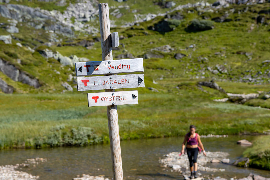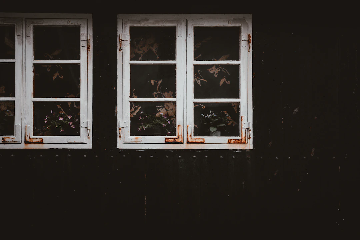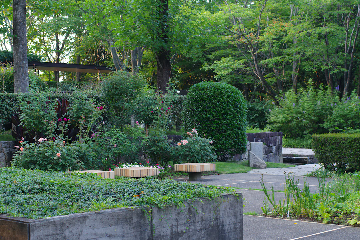Starting a new garden can feel like befriending the ocean—expansive and promising, yet a bit difficult to read at first. The good news: even if you’ve self-identified as having a "black thumb," the adventure is much friendlier than you might think. A little curiosity, a dash of patience, and the right information go a long way to seeing green (without envy).
If I reflect on my earliest attempts—both botanical and aquatic—I remember the same feeling: awe paired with apprehension. But plants, much like tidepool critters, thrive with attentive observation. Whether your goal is a tomato harvest or simply a lovelier windowsill, the secret is to start small, stay flexible, and celebrate learning along the way.
Start With the Right Spot—Gardening, as several seasoned sources will tell you, boils down to location. Choose a patch (or a pot) where you’ll see it daily and where sun lingers for at least 6 hours. Watch how the light moves before making a commitment; those extra moments of patience build a foundation for success. And in Seattle, daylight can be precious, so take advantage of every beam.
Soil and water are the next pillars. Rich, well-draining soil can be the difference between flourishing kale and anemic lettuce. For containers, ensure they're deep enough (lettuce will do with 6 inches, radishes 4). Nearby water access saves your back—and your plants when our northwest dry spells hit.
Choosing What and When to Plant
Picking what to plant isn’t just about taste or beauty. It’s about matching your ambition with your space and Seattle’s unique growing rhythm. Many newcomers over-plant—zucchini especially has a reputation! Stick with a handful of easy veggies: grape tomatoes, lettuce, kale, and herbs like mint, basil, and rosemary. Not only are these beginner-friendly, they also flourish in pots or limited beds.
Remember your planting zone (Seattle is typically Zone 8b). Check seed packets for guidance and reference tools like the Old Farmer’s Almanac’s online planner, which draws on local frost dates for optimal timing. If the calendar still confuses, trust this adage: late frost is foe to tender seedlings.
Mixing in flowers such as marigolds isn’t just about adding color. Companion planting attracts pollinators and discourages unwelcome insects, sparking both beauty and biodiversity in your backyard. Naturally, the humble bee or fluttering butterfly can do more for your vegetable patch than any fertilizer.
Never underestimate the power of quality mulch and a little science. Layering mulch retains moisture and deters weeds, while home fertilizers like diluted coffee grounds or crushed eggshells provide gentle nourishment that your plants (and the planet) appreciate.
Troubleshooting, Tools, and Taking Joy
Pests will come, as will slugs, leaf miners, and the occasional aphid battalion. When I face such invasions in my own garden, I favor natural defenses: neem oil for spot outbreaks and inviting good bugs (like ladybugs) with deliberate planting. In moments of frustration, I remind myself that every setback is a chance to learn, whether it’s timing, watering, or identifying a resilient species.
Trimming plants regularly keeps them healthy—think of it as the haircut analogy your mother might have given. What looks a tad severe one week will bounce back with vigor another, stronger and ready to thrive. Keep your toolkit basic but sharp: a trowel, watering can, sturdy gloves, and something to mark your plants will take you far.
Finally, savor the process. Gardening is as much about noticing the small changes as it is about harvest. Take stock of your successes, learn from your setbacks, and don’t forget to leave a little wildness at the edge of your space—for the pollinators, and perhaps, for your own delight.
| Plant | Ideal Container Depth | Ease of Growth |
|---|---|---|
| Lettuce | 6 inches | Very Easy |
| Kale | 6 inches | Easy |
| Radishes | 4 inches | Very Easy |
| Mint | 6-8 inches | Very Easy |
| Tomatoes (Grape) | 12 inches | Easy |
Gardening is a conversation with the earth. Listen carefully, tweak your approach, and let yourself be surprised by what takes root. Happy growing—Seattle style!
References:
[1] Gardening Tips for Beginners | Healthy Family Project
[2] 10 Top Gardening Tips for Beginners
[3] Vegetable Gardening for Beginners: The Basics of Planting & Growing | The Old Farmer's Almanac
Read More

Ingrid Felton
Author
Born in a small coastal town in Maine, Ingrid Felton spent her formative years exploring tide pools and sketching sea birds. She earned a degree in marine biology before transitioning to work as a scientific illustrator, blending her love for the ocean with her artistic skills.
In her thirties, Ingrid moved to Seattle, where she balances freelance contracts with volunteering at local environmental organizations. She is known among peers for her detailed watercolors and her advocacy for sustainable marine practices.


